We’re about to begin a total kitchen remodeling and my wife wanted a window placed on a short (92″) exterior wall so she can view her herb garden.
I’ve ordered a 16″w x 30″h Pella ProLine fixed glass window and am now beginning to wonder about its installation— Since I’ll be removing the interior sheetrock to insulate and add the electrical connections we want, there should be no problem cutting out a stud, installing a header and framing the rough opening from the inside. My concern is with the exterior:
• CUTTING THE OPENING: Can I safely saw the stucco and whatever’s beneath it (metal lath?) with a circular saw and a masonry blade … without cracking the surrounding stucco?
• SEALING THE EXTERIOR: I don’t see any way to install flashing beneath the existing stucco surrounding the RO. Will brick moulding, a drip cap and sufficient caulk adequately seal the new window?
Your suggestions would be most appreciated!
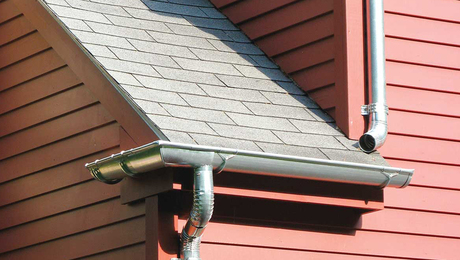
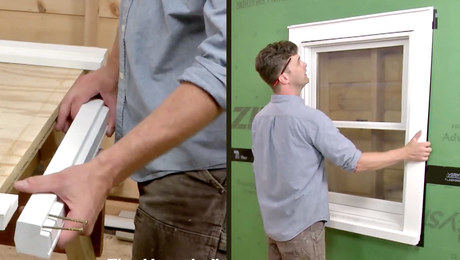
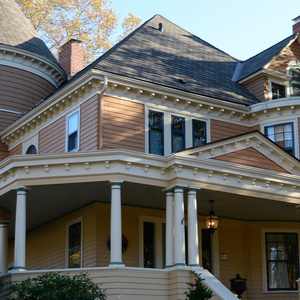

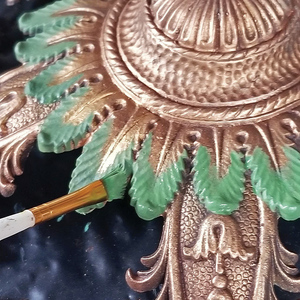
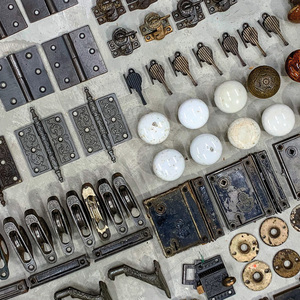













Replies
First do not saw the stucco. It leaves a too perfect edge and cuts the wire mesh in the stucco, leaving your plasterer nothing to tie the new stucco to. Then it will crack like a SOB. Instead use a air chisel (available at the BigBox) and chip away the stucco preferably back to the center of a stud exposing the wire mesh. Now cut away the wire mesh leaving approx. 3 or 4 inches surrounding your old stucco. Install MoistureStop around the new openning starting with the rough sill and then the legs. Install your new window and then install the top piece of MoistureStop over the window flange and under the old building paper left from the old stucco. Plasterer can then install new lath and anchor it to the old wire mesh significantly reducing the possibility of cracking between old and new stucco.
Bing
I hadn't anticipated needing a plasterer--- I just thought I needed to remove enough of the stucco so the rough opening's framing was exposed for the window's nailing flanges which I then planned to cover with brick molding.
I'm not sure I fully understand how much stucco needs to be removed and how much of the underlying mesh needs to be retained. Since I haven't removed the interior sheetrock yet, I don't know exactly where the studs will fall in relation to the location of the window opening--- they could be right on, close, or as much as 15" to the next stud at each side of the window. The window must be installed 36-38" from the inside corner of the room because of fixed dimensions on the kitchen cabinets we've ordered. I allocated a 21" span between cabinets for the 16" wide window.
What is necessary is a foolproof method of keeping out water. Your proposed caulk is woefully insufficient over time.
As the other poster mentioned, the stucco needs to be hammered out to solidbacking. The hole is cut for the window and felt is slid behind the existing felt. On top of this, a layer of bitithane is spread across the bottom below the window, another up along each side (overlapping and adhereing to the window frame itself) and overlapping the bottom, and finally one long one across the top covering each side and the window frame.
Then new metal is cut to fit over the exposed paper/bitithane and stapled using a certain size of staple to meet code. Over this, the new brown scratch fill-in coat is applied, followed by the color. Then the brick mold is attached. And the texture coat follows. You'll want to get the window completely painted prior to this happening.
When an experienced plasterer gets done, you'll never tell it was not original.
And you're right, it's not cheep. But the alternative is even more costly over time.
Thanks for the advice. I knew (although didn't want to admit) that brick molding and caulk alone probably wouldn't do the job. That's why I posted my query. Obviously, I need a pro to do the stucco work. Matching the color wash on the new stucco so it looks aged and matches the rest of the stucco is another problem, however Hope my wife appreciates the time and expense to install that window! (Actually, I want it there too for the added light to a dark room ... and for the view!)
Thanks folks!!!!
I can't argue any expert opinions, but will just mention that we've torn out a few 70+ year old windows on our stucco house that had nothing but (old) caulk as a water proofer. With the exception of some badly rotted sills and brick moulding (due to poor aluminum cladding installed at some point) the window framing seemed solid as ever.
In the ones we replaced, we just slid the new window into the existing opening, wrapped the lower parts with rubber waterpoofing flashing stuff, and then did the drip-cap + brickmoulding + caulk.
Not saying thats how you should do it...just that's how we did it.
The only thing I'd do differently next time is to use the vinyl brickmoulding instead of wood and maybe look for some less expensive aluminum window options (instead of wood).
Where are you located?
Now I don't know anything about stucco, but KC is a wet enough area that I would not trust a caulk and fit job.
I have always cut the stucco for a new exterior opening with a 4 1/2" grinder with a diamond blade. If you measure correctly, your new window will fit snug right into the hole.
You should cut the stucco down to the sheathing, insert a metal drip cap, caulk all around, and use masonry clips to hold the thing in place.
It's about time there was another Kansas Citian in the house. rg
"It's about time there was another Kansas Citian in the house."
Does eastern Jacomo count?
Yes it certainly does.
FWIW, we do windows and doors in MN like that all the time. If you spend the money and get a nice clad unit, it'll be there for a long time.
Good Luck rg
The window I've ordered is a Pella ProLine--- wood fixed window with an aluminum clad exterior and low-E glass. Not top of the line, but pretty good quality ... I think.
First a disclaimer:
I am not a professional.
But I have done a lot of building, and I have done almost exactly what you want to do. Here's what I did:
First strip the interior down to bare studs and mark the corners of the rough opening you need (or if you can, reframe the rough opening first).
Then use a small masonry drill bit and drill holes at the corners of the rough opening through to the exterior & through the stucco. This gives you the exact measurements you need to cut the exterior stucco.
I have an old Craftsman skill saw that cost maybe $30 15 years ago. I now use it specifically for this type of thing. Buy a 7" diamond-embedded masonry blade ($25?) and go to it.
It makes dust like crazy so wear a good mask and goggles and a hat. Close all the windows & wait until you're done to take your daily shower.
It goes through the stucco like butter and makes a beautifully clean cut. DO NOT buy the $2 black abrasive "masonry" blades. They wear away to a nub in about 4 linear feet of cutting, dont cut as well, and stink in the process. Cut all the way through the wire mesh but try to avoid going much deeper as the tar paper and wood can gum up the blade a little.
The waste stucco should hold in place even after all four sides are cut since it's still stapled to the wall. A small crowbar or similar item should lift one side out & then the rest pulls out pretty easy.
Now, I'm sure there are some circumstances where the other process described in previous posts is better. Certainly, if this window will be expected to receive horizontal rain with some frequency, then some fairly drastic weatherproofing steps should be taken. When I did this, it was in a bungalow with 20" overhangs on windows where the top of the window is maybe 18" below the overhang. As far as I know, the top of the window has never even been wet. In situations where there is a moderate danger of water infiltration there should be a reasonable opportunity to tuck flashing of some sort around the top & sides of the window opening. If the danger is more than moderate, my method may not be appropriate & in that case you shouldn't do it yourself.
Good luck!
NannyGee, your description is exactly what I had in mind before the warnings that chipping out a wide opening and calling in a plasterer was necessary to avoid having the whole thing would leak and fall into disrepair: My original thoughts were to frame the rough opening from the inside since the sheetrock and insulation will be removed, drill from the inside at each corner to mark the opening and then go outside to saw out the stucco. I appreciate the tip about getting a good diamond-embedded blade!
I don't think the window will be subjected to severe weather--- It will be on a south-facing wall, 30" that forms an alcove with an east-facing garage wall so it should be pretty well sheltered from west winds. Further, there's a 12" eave that will be about a foot above the top of the window. For sealing everything, I was figuring on sliding felt between the sheathing and metal mesh (if I can), nailing the window flanges and then wrapping that peel and stick membrane stuff (don't recall the official name) across the felt and up the sides of the window before applying the brick mold. Then seal with a good quality caulk. Sound right to you?
Thanks again!
"Sound right to you? "
Pretty much. Might be tough to tuck anything behind the mesh except maybe thin sheet metal. Too many staples & you don't want to wedge the "good" stucco out even a little. Any debris around the cut then will fall into the gap and your stucco will forever have a little bulge in it.
M&D's method sounds good to me also.
Bill:
I'm in MN.
Like I said, I don't know if that was the best way, but that's the way the old 70 year old windows were done, so we just followed suit.
Yes, but wasn't there felt or other flashing around the opening before the window and stucco was installed to direct any water the get is down the stucco and keep it out of the opening?
If you just cut a hole in the wall you don' have that.
Umm...yea, there was/is felt all around the opening. We wrapped the lower part of the opening with that rubber weatherstripping stuff so that it overlapped the felt. So, in that sense, yea, I suppose it is flashed.
Mike,
I lived in Phx, Az the capitol city if stucco. I can't tell you how many Pella windows and doors I installed into stucco. Layout the window dimensions and add 1/4 to each side. Use an old skillsaw or grinder with a diamond blade. There will be a ton of dust so wear eye protection and a mask. I used to carry a clean shirt for after the stucco cuts. Attach the window with Pella masonry clips or use #1 torx head screws through the interior jambs. Make sure you shim the window at the points that the directions will point out. Insure an even reveal between the sash and the frame. Install backer rod to the exterior perimeter with a 5-way or a 2 inch drywall knife. Recess the backer rod at least 1/4 to 3/8 of an inch to give the caulk a deep enough surface to adhere to. Over the backer rod install high quality polyureathane caulk, no latex caulk here. Unless your stucco cut is jaggered the caulk alone should suffice. If a stucco repair is needed use QuikCrete "whitewall" for the repair.
Those who want you to peel back stucco, wire and paper still need to consider the stucco to window connection. As soon as the window has been through a seasonal change the stucco will pull away from the extruded metal window frame. Stucco will not adhere to metal overtime. Polyurethane caulk will attach to both metal and masonry products.
No call backs todate.
Good luck
Mark
The biggest problem we see (and we see it often) with EIFS and Hardcoat stucco as well is improper installation around doors and windows resulting in wood rot at the sill, base of jambs, track guides and mullions. We also see the same problem at the top trim (especially in arched windows with no flashing properly installed over the window). The reason for the problem is that quite often the stucco is butted or terminated too close to the window and improper caulk and technique is employed to apply the caulk. The stucco stays in place and doesn't move, however, the wood window or door will contract and expand with changing weather conditions and will fracture an improper caulk joint resulting in moisture intrusion and subsequent wood rot.
There should be a 1/2" to 3/4" gap between all sides of the wood window or door and the stucco. Flashing must be installed under the stucco and over the window trim at the top. Backer rod must be installed around the window in the gap. Dow 790 caulk is then applied over the backer rod and tooled to a concave finish. This enhances the Dow 790 caulk's ability to stretch without fracturing and gives a water tight seal. The caulk should be adhered to the backer rod, the wood and the stucco only, not the wall behind the stucco which would limit the flexibility of the caulk.
There are some excellent articles on this subject at http://www.jlconline.com
Mike, since you will have access to the inside of the wall, think thru all the normal construction steps, then apply them in reverse order.
Measure carefully, cut the stucco ¼" wide for backer rod and sealer.
flash the opening, using quack tape or other adhesive to hold it in position, from the inside. Remember that the true 'drain plane' of stucco is the paper behind the stucco.
Frame the opening.
And yeah, I'm the guy that always says to break, not cut, stucco.
SamT
Okay, I need a little clarification here. Pella says that the rough opening needs to be 3/4" wider and higher than the window's 16" x 30" dimensions. But as far as how much stucco to remove, do I----
A. Cut out the stucco to expose 2" of sheathing/framing for the felt, the window's nailing flange, drip cap and waterproof membrane, all covered by 2" wide brick molding that snugs right up to to the edge of the stucco, or ...
B. Cut out the stucco with an extra quarter inch (2 1/4") on all sides so I can pack in backer rod?
There is more than one way to set the window, each with variations. But I would not suggest making any cuts until you have the window sitting in your garage and measure it yourself. The actual measurements can be less than the described measurements by as much as 1/2" each way depending on the type & quality of window. When you're trying to shoot for accuracy, don't make assumptions about the window from the factory. I would assume the 3/4" rule from Pella is a general suggestion to assure the opening isn't too small - good for framing. In your situation, I would only go 1/4" over the ACTUAL measurement of the window box for the stucco cut.
What Nannygee and John said.
SamT
I'm back with final questions before installing the window--- The interior wall has been gutted and I've built the framing for the window's rough opening. The exterior has fibre sheathing (Celotex?) topped by wire mesh, a hard coat of plaster and then a finish coat that's slathered on in broad, thick overlapping strokes. There is no house wrap between the mesh and sheathing. All told, the stucco's probably 1/4-1/2" thick (depending on the varying surface texture) and the sheathing looks to be 1/2" material.
Before I begin cutting the opening, please help me to verify that the following is correct---
1. I drill holes at each corner (from the interior) to mark the rough opening on the outside. This is where I need to cut all the way through the plaster and sheathing. Right?
2. I cut a second rectangle through the stucco & mesh (just to the sheathing) that's 2 1/4" outside the rough opening--- 2" for the nailing fin, topped by flashing tape, drip cap & 2" wide brick molding, plus another 1/4" clear to the sheathing for backer rod and caulk?
3. What about the joint between the window frame and the brick molding ... does that need to be caulked too?
4. Pella's instruction sheet makes no mention of an exterior sill. Do I need to fabricate and install one, or will the aluminum-clad window, plus brick mold and caulk be okay for the bottom edge?
Thanks once again,
Mike in KC
Well, Nannygee was right-- a diamond blade saw cuts through stucco quite easily. The window's in, with roofing felt and flashing tape applied first. The brick molding is on, with a first coat of paint. Once that's cured, I'll apply the caulk. Thanks everyone!
Mike in KC
I hope no one minds me reviving this 2003 thread, amazing to think great stuff like this was getting put up here 20 years ago! I read every single post in this thread as it describes what I want to do. My tract home (two story home built in 2006) has a downstairs bathroom with fiberglass shower insert and no window, 9 foot ceiling.
I have pictures from the framing stage and know that 3 studs run through wall 24 inch on center . About halfway up , or just under halfway from bottom, are what looks like 4 x 4 cross braces. the outside was completely covered in OSB. I will post some pictures here soon. Because of the shower insert which reaches up to about 6 feet inside, I cannot open the inside wall anymore than the window space above the shower, I will need to do this work from the outside, removing and cutting through stucco and OSB, to open the wall.
I studied carefully all the talk about making sure it is all waterproof when finished and before replacing the stucco. I plan to have whole house painted soon, so a little less worried about color matching, but do want a texture matched proper coating.
Back to the framing, I have a feeling that the proper way to do this is to insert full length
studs from what I think you call the sole, at the bottom, to the top, just like existing studs now, which means removing the 4x4 cross braces located about 3 feet from bottom.
The other way to do this was to place the new studs on top of these 4x4 , up to floor above. But that just seems like not enough support.
I want to also talk about the three studs there now, picture coming soon. I have 3 studs.
My plan is to remove only the center stud, and place the window inside of the two existing.
From every diagram and discussion this has me thinking that those two outer studs are my king studs, and I only need to place jack studs inside of them, attached to those outer studs, and place a 4x4 sill, then a 4x4 header to brace the cripple stud that is currently the center stud and will be cut to insert the window.
As for the window, another house built by same builder in this tract, downstairs bath just like this one, but a different model home, has a specific size window, looks like 43 inches wide by 15 inches high, I was going to order from Milgard a custom size window those dimensions for my new install. If my math is right, that 43 inch width is the two existing outerstuds with an added 2x4 brace on each side above sill holding up header.
Hope this all makes sense, since I have no picture yet.
So the question for this post is quite simply this: Do I , must I , remove the 4x4 cross brace a few feet off ground and make sure jack studs holding up the sill reach all the way to bottom sole plate? If that is true I need to cut open the outside stucco wall a little more to get to those cross braces.
Thank you for taking the time to read this. Appreciated.
When you post the pictures, show outside window are and full end of house there. 20 y,o, house with 4x4 cross “bracing” is nothing I’ve ever seen framed in this corner of Ohio. Let in 1x4 or metal bracing, yes.
Thanks!
And if you had discovered this forum 20 yrs ago it would have been impossible to cure your addiction to the replies….
Two photos. One showing outside wall and rough idea of the bathroom window.
The other is from inside, poor photo, but closest to us is the plumbing for tub n shower, just past that outlined in red highlight are the cross braces I spoke of.
I am going to open the space above shower today ro see exact placement of studs.
And here is how the wall looks now inside, and a picture of a different bathroom with window installed to show what I have now (blank wall) and what I want (window).
And now, the space open behind the wall above the shower. I opened it to 45 inches wide and 15 inches high. Now, I can see clearly that if I take out that stud in the center it leaves me with a 28 inch distance between studs 1 and 3. And 15 inch tall .
Which is probably a good enough window to at least get some light into this bathroom. The center stud is 16 inches off center the one to the right, what I am calling number 3. And about 14 inches off center to the double stud to the left.
And the cross braces, I ran a rod down into the opening and am hitting cross braces at about 20 inches below the lower edge of the opening.
As I have been writing here, I want to add a window, I want to do it correctly, do it right. Cutting as little stucco as possible. And framing it properly.
Any advice is appreciated.
Having trouble getting this photo to load.....
The cross bracing looks about the right height for anchoring grab bars, not structural.
Looks like the wall is load bearing however. Be sure your header has full support to the foundation or slab.
I sure appreciate the feedback. Now knowing I need full length studs to foundation, and not wanting to open outside wall that much. I am thinking Vertical windows between studs.
My first thought was one window, 14 wide, about 22 high in the opening on right. It would be off center, but would bring light, and venting air when opened. And no structural changes. Another choice is two windows between the spaces , a little more centered and balanced, but left side is 12 inches, so it would be two 12 wide, same 22 or so high . I am a functional driven person, not very good on aesthetics or design. So I lean toward a simple, single, off center window, not sure how wierd it would look to have two small windows.
Would like the opinion of people who have better sense of style than I do.
I can go either way. one window on right, two slightly smaller windows on each side of center stud.
Thanks.
Your call on the venting and how many, and location…..
But, are you going clear glass or no view (in or out)?
And, think tempered in a shower or…
Glass block with a vent. Not sure but would think glass block would pass muster. Long ago we had an inspected addition and no one mentioned a problem with block. Check it out as I’m old and could be getting feeble.
I did pass the senior clock test.